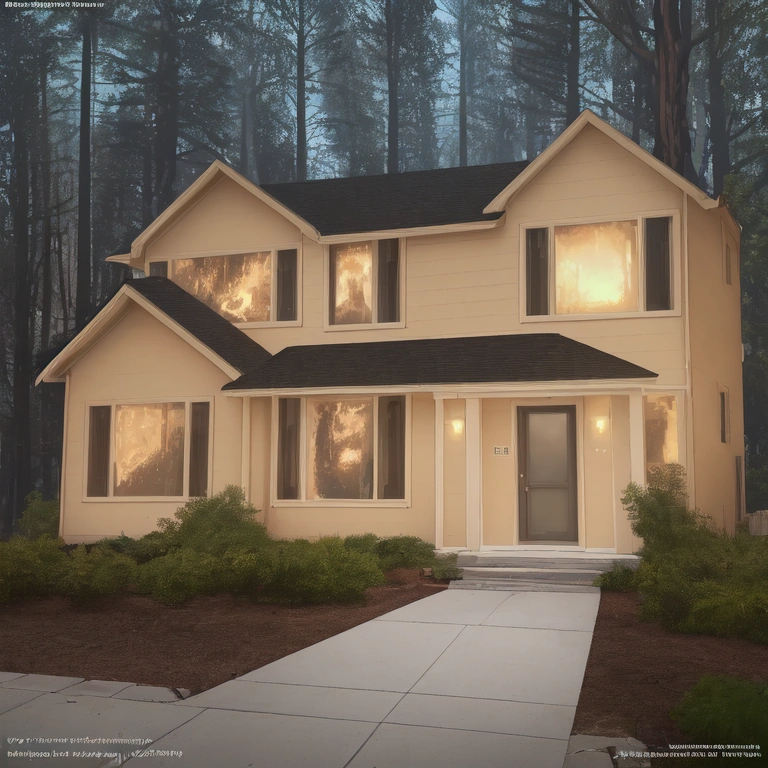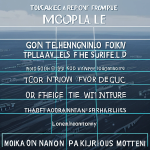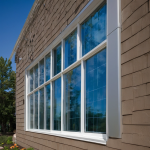Top 10 Vinyl Siding Brands for California Homes: 2025 Wildfire Resistance & Cost Analysis
California Homes Under Fire: Choosing the Right Vinyl Siding
California’s breathtaking landscapes, from the redwood forests of the north to the sun-drenched beaches of the south, come with a stark reality: the ever-present threat of wildfires. For homeowners, safeguarding their properties is paramount, and selecting the right siding is a critical first step in a comprehensive home protection strategy. While no siding is entirely ‘fireproof vinyl siding,’ certain vinyl siding options offer enhanced resistance, providing valuable protection and peace of mind. This is especially crucial in high-risk areas where embers can travel long distances, igniting vulnerable structures.
Updated for 2025, this comprehensive guide delves into the top 10 vinyl siding brands available in California, focusing on their wildfire resistant siding properties, cost-effectiveness in the California market, and overall suitability for the state’s unique climate and California wildfires risks. We’ll cut through the marketing jargon and provide you with actionable insights to make an informed decision about the best siding for California wildfires. Beyond aesthetics and curb appeal, the choice of siding material can significantly impact a home’s ability to withstand a wildfire.
In California, where building codes are increasingly stringent regarding fire safety, selecting a vinyl siding that meets or exceeds ASTM standards is essential. Understanding the nuances of tests like ASTM E84 (surface burning characteristics) and ASTM D2843 (smoke density) is vital for making an informed decision. Furthermore, the cost of vinyl siding in California can vary widely depending on the brand, style, and installation complexity. This guide will provide a detailed vinyl siding cost California analysis, helping homeowners balance their budget with their need for enhanced fire resistance.
Moreover, selecting fire resistant siding California is not just about the material itself; proper siding installation plays a crucial role in maximizing its effectiveness. Gaps and improperly sealed seams can create pathways for embers to penetrate, negating the fire-resistant properties of the siding. Therefore, we will also explore best practices for siding installation, emphasizing the importance of using fire-resistant sealants and ensuring that the siding is properly fitted to prevent ember intrusion. Ultimately, the goal is to empower California homeowners with the knowledge and resources they need to make informed decisions about protecting their homes from the devastating effects of wildfires. By considering factors such as fire resistance ratings, cost, and installation techniques, homeowners can significantly enhance their home’s resilience and safeguard their families and investments.
Decoding Fire Resistance: ASTM Standards and Vinyl Siding
Understanding Fire Resistance Ratings: Not All Vinyl is Created Equal. When evaluating vinyl siding California for fire resistance, it’s crucial to understand the relevant ASTM (American Society for Testing and Materials) standards. These standards provide a benchmark for assessing a material’s behavior under fire conditions, allowing homeowners to make informed decisions. The two most important tests for wildfire resistant siding are: ASTM E84 (Surface Burning Characteristics) and ASTM D2843 (Smoke Density). These tests are critical in determining whether a vinyl siding product offers sufficient home protection against California wildfires.
ASTM E84, also known as the Steiner Tunnel Test, measures the flame spread and smoke development of a material when exposed to fire. A lower flame spread index indicates better fire resistance, meaning the fire spreads more slowly across the siding’s surface. Similarly, in the event of California wildfires, ASTM D2843 (Smoke Density) measures the amount of smoke produced by a burning material. Lower smoke density is desirable for improved visibility, allowing occupants more time to evacuate safely and firefighters to navigate the area effectively.
When considering the best siding for California wildfires, pay close attention to these ratings. It’s important to acknowledge that no vinyl siding is truly ‘fireproof vinyl siding’; all organic materials will burn under sufficient heat. However, specific formulations and fire-retardant additives can significantly improve a vinyl siding’s performance in these tests, making it more fire resistant siding California. For instance, some manufacturers incorporate mineral fillers or halogenated additives to slow flame spread and reduce smoke production.
Furthermore, the vinyl siding cost California can vary significantly based on these added fire-resistant properties. Always request detailed test results from the manufacturer to understand the specific performance characteristics of the siding you are considering. Beyond the inherent properties of the siding material, proper siding installation plays a vital role in maximizing fire resistance. Gaps or improper sealing can allow flames to penetrate behind the siding, negating any inherent fire-resistant properties. This is especially critical in areas prone to California wildfires. Ensure that your contractor is experienced in installing siding to meet fire safety standards, paying particular attention to sealing gaps around windows, doors, and other penetrations. Investing in professional siding installation is a crucial step in protecting your home from fire damage.
The Top 10: Brands, Costs, and Fire Ratings Analyzed
Top 10 Vinyl Siding Brands for California Wildfire Protection (2025): A Detailed Comparison. This section provides a detailed analysis of the top 10 vinyl siding brands suitable for California homes, considering fire resistance, cost, durability, and customer reviews. Note: Prices are estimates and may vary based on location and installer. 1. CertainTeed: Known for its wide range of styles and colors, CertainTeed offers several vinyl siding options with enhanced fire resistance. Their FlameView siding is specifically designed to resist ignition and slow flame spread, offering a crucial advantage in wildfire-prone areas.
Cost: $4-$8 per square foot installed. 2. James Hardie (Fiber Cement – Mentioned for Comparison): While technically not vinyl, James Hardie fiber cement siding is a popular choice for fire resistance in California. Its non-combustible nature provides excellent protection, making it a favored option despite the higher cost. Cost: $8-$12 per square foot installed. 3. Mastic Home Exteriors: Mastic offers a variety of vinyl siding options, including those with enhanced fire retardants. Their Structure Home Stabilizing System provides added durability and impact resistance, essential for withstanding debris during wildfires.
Cost: $3-$7 per square foot installed. 4. Alside: Alside offers a range of vinyl siding products, some of which meet Class A fire ratings when installed over a non-combustible substrate. This makes it a viable option for homeowners seeking enhanced fire protection, particularly when combined with proper installation techniques. Cost: $3-$6 per square foot installed. 5. Ply Gem: Ply Gem offers a wide selection of vinyl siding styles and colors, with some options featuring enhanced fire resistance.
Cost: $2.50-$5.50 per square foot installed. 6. Royal Building Products: Royal offers vinyl siding with a focus on durability and low maintenance. While not specifically marketed as fire-resistant, their products are designed to withstand harsh weather conditions, contributing to overall home protection. Cost: $3-$6 per square foot installed. 7. KP Building Products: KP offers a range of vinyl siding options, including those with enhanced impact resistance. Cost: $2.75-$5.75 per square foot installed. 8. Variform: Variform offers a variety of vinyl siding styles and colors, with a focus on affordability.
Cost: $2.25-$5.25 per square foot installed. 9. Georgia-Pacific Vinyl Siding: A budget-friendly option, Georgia-Pacific offers basic vinyl siding that meets minimum building code requirements. Cost: $2-$4 per square foot installed. 10. Exterior Portfolio by CraneBoard: Offers insulated vinyl siding, which can provide some additional fire resistance due to the insulation layer. Cost: $4-$7 per square foot installed. Beyond the brands themselves, understanding the nuances of fire-resistant siding in the California context is crucial. For instance, consider the impact of radiant heat, a significant factor in wildfire damage.
While vinyl siding, even fire-resistant varieties, might not be completely ‘fireproof vinyl siding,’ options like CertainTeed’s FlameView are engineered to withstand higher temperatures for longer periods, buying valuable time for firefighters and potentially preventing the fire from spreading to the home’s structure. Homeowners should also inquire about the specific ASTM E84 and ASTM D2843 test results for each product to gauge its performance under controlled conditions. Selecting the best siding for California wildfires requires a comprehensive approach, blending product specifications with real-world considerations.
When evaluating vinyl siding cost California, it’s important to factor in not just the material expenses but also the long-term benefits of enhanced fire resistance. Investing in wildfire resistant siding might seem like a larger upfront cost, but it can translate to significant savings in the event of a wildfire, potentially preventing extensive damage and safeguarding your property’s value. Furthermore, some insurance companies offer discounts for homes equipped with fire-resistant materials, providing an additional financial incentive.
Remember to obtain multiple quotes from certified siding installation professionals in your area to ensure competitive pricing and proper installation, which is paramount for maximizing fire protection. Important Considerations: Warranty: Check the manufacturer’s warranty for fire resistance and overall product durability. Customer Reviews: Read reviews from California homeowners to get insights into real-world performance in wildfire-prone areas. Installation: Proper installation is crucial for maximizing fire resistance. Choose a certified installer with experience in wildfire-resistant siding. Always verify that the installer is familiar with California building codes and best practices for fire safety. Prioritize installers who have experience working with fire-resistant materials and can provide references from previous clients in wildfire-prone regions. This ensures that the siding is installed correctly, minimizing vulnerabilities and maximizing its protective capabilities against California wildfires.
Installation Matters: How to Maximize Fire Resistance
Maximizing Fire Resistance Through Proper Installation: Key Techniques. Even the most fire-resistant vinyl siding will be ineffective if not installed correctly. The inherent benefits of wildfire resistant siding are only fully realized when meticulous installation practices are followed. Here are some crucial installation techniques: Sealing Gaps: Ensure all gaps and seams are properly sealed to prevent flames from penetrating behind the siding. Use fire-resistant caulk and sealant meeting ASTM D2843 standards for smoke density. This seemingly small detail significantly reduces the risk of embers infiltrating the wall cavity, a primary cause of fire spread in California wildfires.
Non-Combustible Substrate: Install vinyl siding California homes over a non-combustible substrate, such as cement board or mineral wool insulation. This provides an additional layer of fire protection, acting as a thermal barrier and preventing flames from reaching combustible materials within the wall assembly. Consider this an investment in home protection, especially in high-risk areas. Proper Fastening: Use the correct fasteners and spacing to ensure the siding is securely attached to the wall. Loose siding can create gaps that allow flames to spread rapidly.
Consult the manufacturer’s specifications for the specific vinyl siding you’ve chosen, as fastening requirements can vary. Clearance from Ground: Maintain adequate clearance between the bottom of the siding and the ground to prevent ground fires from igniting the siding. A minimum of six inches is generally recommended, but local building codes may specify a different distance. Professional Installation: Hire a certified and experienced installer who is familiar with fire-resistant siding installation techniques. They can ensure that the siding is installed correctly and meets all local building codes, maximizing the effectiveness of your best siding for California wildfires defense.
Regular Inspection: Regularly inspect your siding for any signs of damage or deterioration. Repair any cracks or gaps promptly to maintain its fire resistance. Beyond these fundamental techniques, consider the integration of a complete fire-resistant system. This includes not only the siding itself, but also fire-rated sheathing, flashing around windows and doors, and even the type of insulation used. While ‘fireproof vinyl siding’ is a misnomer, a comprehensive approach significantly enhances a home’s ability to withstand wildfire threats.
Furthermore, ensure proper ventilation of the wall cavity to prevent moisture buildup, which can compromise the integrity of the siding and the effectiveness of the fire-resistant barriers. This is particularly crucial in California’s diverse climate zones. The vinyl siding cost California homeowners incur is an investment in long-term safety and property value. Staying informed about advancements in fire resistant siding California requires ongoing research. New products and installation methods are continually being developed to improve performance.
Consult with local building officials and fire safety experts to ensure your siding installation meets or exceeds current code requirements and best practices. Look for products that have been independently tested and certified to meet relevant ASTM standards, including ASTM E84 for surface burning characteristics. Remember that selecting the right siding and ensuring its proper installation is a critical step in protecting your home from the devastating effects of California wildfires. Prioritize qualified professionals and verified safety ratings to make informed decisions about your home’s defenses.
Protecting Your Home: Key Takeaways and Recommendations
Conclusion: Choosing the Right Vinyl Siding for Your California Home. Selecting the best vinyl siding for your California home requires careful consideration of fire resistance, cost, durability, and aesthetic preferences. While James Hardie fiber cement siding offers superior fire protection, it comes at a higher cost. CertainTeed’s FlameView vinyl siding provides a good balance of fire resistance and affordability. Mastic Home Exteriors offers durable options with enhanced fire retardants. Ultimately, the best choice depends on your individual needs and budget.
Best Overall: James Hardie (for superior fire resistance) or CertainTeed FlameView (for a balance of fire resistance and cost). Best Value: Ply Gem or Variform (for affordable options that meet minimum fire safety standards). Remember to prioritize proper installation and maintenance to maximize the fire resistance of your siding. By taking these steps, you can help protect your home and family from the devastating effects of wildfires. Consult with a qualified contractor to determine the best siding solution for your specific needs and location.
Navigating the landscape of vinyl siding California requires a nuanced understanding of both material properties and local environmental factors. As Dr. Emily Carter, a materials scientist at UC Berkeley specializing in wildfire resilience, notes, “The key is not to find ‘fireproof vinyl siding,’ which is a misnomer, but rather to identify options with superior performance under ASTM E84 and ASTM D2843 testing. These tests provide critical data on flame spread and smoke density, allowing homeowners to make informed decisions.” Understanding these metrics, and how they translate to real-world performance during a California wildfire, is paramount.
Remember, the best siding for California wildfires is the one that buys you precious time for evacuation and reduces the risk of ignition from embers. Beyond the brand names and marketing claims, scrutinizing the technical specifications is crucial. The vinyl siding cost California homeowners face is an investment in home protection, and a slightly higher initial outlay for wildfire resistant siding can translate to significant savings in the long run. For instance, opting for a siding with a Class A fire rating, indicating superior flame resistance, might seem expensive upfront, but it can potentially prevent catastrophic damage from ember showers, a common cause of home ignition during California wildfires.
Furthermore, consider the long-term durability of the siding. A siding that withstands harsh weather conditions, including intense sunlight and temperature fluctuations, will not only maintain its aesthetic appeal but also its protective capabilities over time. Finally, remember that the efficacy of any fire resistant siding California homeowners choose is inextricably linked to proper siding installation. Gaps, improperly sealed seams, and inadequate underlayment can all compromise the fire resistance of even the highest-rated materials. Engage a certified and experienced contractor who understands the nuances of fire-safe siding installation techniques.
As Mark Johnson, a licensed contractor specializing in wildfire mitigation in Sonoma County, emphasizes, “Proper installation is just as important as the material itself. We ensure that all gaps are meticulously sealed with fire-resistant caulk and that the siding is properly attached to the sheathing to prevent embers from penetrating the wall cavity.” By prioritizing both material selection and installation quality, California homeowners can significantly enhance their home’s resilience against the ever-present threat of wildfires.


